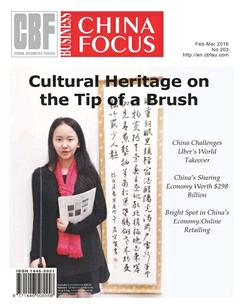Top 10 Attractions in Hubei,China
Hubei, a province in Central China, carries the popular name of “Chu”, after the powerful state of Chu that existed here during the Eastern Zhou dynasty. A long and splendid history gives the province abundant cultural attractions, including Yellow Crane Tower, Jingzhou City Wall, Xianling Mausoleum of the Ming Dynasty and the Ancient Building Complex in the Wudang Mountains.
The central and eastern parts of Hubei comprise the Jianghan Plain while the western periphery is more mountainous. Hubei is famous for its varied agricultural products as well as spectacular natural attractions such as Shennongjia Scenic Area, Xianning Hot Spring and Enshi Grand Canyon.
1. Jingzhou City Wall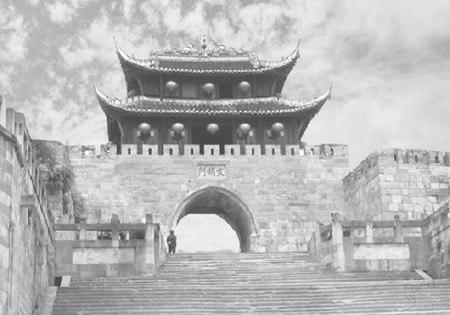
Located in Jingzhou City, the Jingzhou City Wall has over 2000 years of history. First established in the East Han Dy-nasty (25 AD - 220 AD), it has been damaged and repaired multiple times during the Song, Yuan, and Ming dynasties. The current wall was built in the third year of Shunzhi Reign(1646) of the Qing Dynasty (1644 - 1911). The wall has three parts: inner earth city, middle brick city and outer water city. It is 9 meters in height and 10 meters thick. The perimeter of the wall is 11.03 kilometers.
Jingzhou has been a transportation hub and commodity distribution center for 6,000 years.
The ancient city of Jingzhou forms what is now the main urban area of Jiangling County, which is one of the counties within Jingzhou City. Situated in the middle reaches of the Yangtze River, this has been a strategic location of military importance since ancient times.
Ying, within the borders of present-day Jingzhou, was the capital of 20 kings over 411 years of the State of Chu during the Spring and Autumn and Warring States periods of the Zhou Dynasty (1046 BCE - 256 BCE).
The city is said to have been built with earth by Guan Yu in the Three Kingdoms period. During the Southern and Northern Dynasties period, it was the capital of the Western Liang. In the Five Dynasties and Ten Kingdoms period, it was the capital of the Nanping State.
2. Enshi Grand Canyon
Located in Banqiao Town of Enshi City, the Enshi Grand Canyon reaches 108 kilometers in length and consists of 11 attractions including a forest park, steep mountains, spectacular waterfalls and exciting attractions. Besides, it features karst landforms, including over 200 karst caves, which are spectacular.
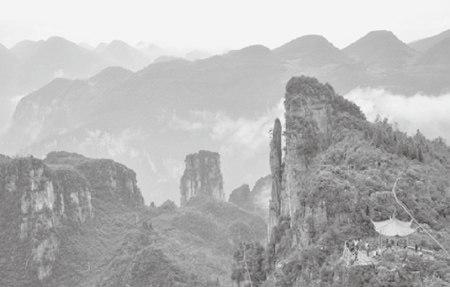
Enshi is 530 kilometers west of Wuhan, which is the provincial capital of Hubei. Western tourists speak highly of the canyons clean water, marvelous waterfalls and peaks. It is bordered by Zhangjiajie National Forest Park in the south, Yangtze Three Gorges in the north, and in neighborhood of Yichang City in the east. Its precipices stretch as long as hundreds of miles.
3. Hubu Lane
Located in Ziyou Road, Wuchang District of Wuhan City, Hubu Lane is one of the most famous streets in Wuhan with over 400 years of history. The 150-meter long street is crowded with various kinds of stores, including snack stalls, shopping and entertainment. It has become Wuhans official ‘snack street, containing 160 stores selling 170 types of breakfast foods and snacks. In here, you can try authentic Re Gan Mian(hot-and-dry noodles), Fried Tofu Skin and shaomai (Steamed Pork Dumplings).
Hubu Lane of Wuhan city has a long history and is known for various kinds of Hubei local breakfast.
In the 1940s, Xies doughnuts, sold by peddlers along streets, finally settled down in Hubu Lane. The snack, with its multiple varieties and delicious flavors, was well received in Wuhan city. In the early 1950s, the catering service sector entered the establishment of cooperatives. Xies doughnuts business was incorporated into state-owned restaurants, with weaker reputations. In the 1970s, some local residents built breakfast services at Hubu Lane to support the family. The famous snacks included Granny Shis hot dry noodles and Chens red oil beef noodles.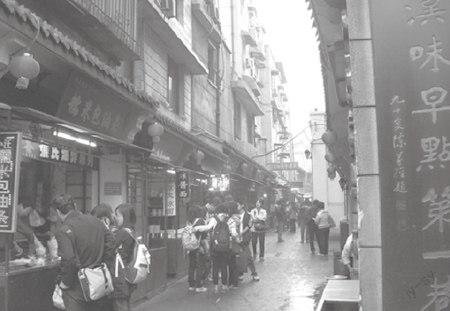
In the 1980s and 1990s, the riverside section of Zhonghua Road was home to station bases, bus terminals and a passenger ferry terminal in Wuhan city. A lot of Wuhan residents boarded ferries to go to work across the Yangtze River and Hubu Lane became a gathering place for these office workers in the morning. In 1990, Xie family members returned to the profession of serving Xies doughnuts. They resumed the traditional processing method and operation mode. The busi-ness was based in Hubu Lane. It marked the thriving of Hubu Lane. Since then, old residents of Wuhan would frequent the lane from various parts of the city to taste Xies doughnuts.
The small lane, 150 meters long and three meters wide, is visited by over 1,000 customers per day all the year round.
In 2003, Wuchang district government planned to improve the Hankou breakfast snack services in the lane. It rebuilt the lane with Ming and Qing dynasty architectural styles. It set up a cultural wall, 19 meters long and three meters high, along the lane, to promote Hankou style breakfast snacks.
Hubu Lane snacks have become a synonym for Hankou style breakfast services. Wuhan has a popular saying, which is to “have breakfast snacks in Hubu Lane in the morning and dinner at Jiqing Street at night.”
Hubu Lane has a long history as a place to visit. The narrow lane was clearly marked on a map of Hubei and Guangdong during the reign of Emperor Jiajing of Ming Dynasty, revealing that the lane is at least a history of 400 years. Hubu Lane was popular throughout history. It was known as a neighbor to the east of the Hubu office (the ministry of revenues in feudal China). The lane, adjoining wharfs, was permeated with an endless stream of vehicles and noisy passengers. Hardworking residents of the lane cooked delicious snacks of Hankou style, featuring fresh, fragrant, fast and hot food, to serve crowds. The reputation soared and endured.
The lane has won the title of Best Snacks of Hankou Styles for six years. In 2002, Wuchang district government decided to carry out five people-friendly projects in the fields of morning snack service, health, employment, prevention of burglary and mutual assistance. It decided to cultivate Hubu Lane, of 12 snack bars in 147 meters long and three meters wide lane, into a street serving Hankou style breakfast snacks. The government invested money to renovate the shabby lane with the architectural styles of Ming and Qing dynasties. As a result of three rounds of rehabilitation, the old lane is currently equipped with charming Hubei characteristics. It has developed into a nationwide brand supplier of snacks of Hankou styles.
Hubu Lane can receive about 10,000 customers in a day. On weekends, customers can amount to 25,000. During routine holidays and big festivals, over 30,000 customers crowd the lane. On the Beijing Olympic torch relay day, the lane received nearly 40,000 customers.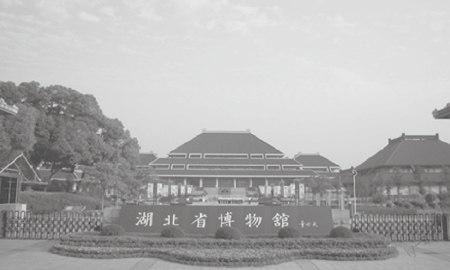
Hubu Lane has become a synonym of snacks of Hankou styles. It has developed into a leading brand of Hankou-flavor snacks. The operation and management modes of Hubu Lane have turned into “textbooks” for the catering service sector, particularly the snack service sector, and created a new drawing point for Wuhan city.
4. Hubei Provincial Museum
Located in Wuchang District of Wuhan City, it is the only provincial comprehensive museum in the province. Covering an area of 49,611 square meters, it houses over 200,000 historical and cultural relics, including pottery, porcelains, jade, bronze, and ancient musical instruments, of which nearly 1,000 are listed as first-class relics of China. The Chime Bells Exhibition Hall contains two parts: the Exhibition Hall and the Music Hall, which is the largest ancient instrument exhibition hall in China.
5. Xianning Hot Spring
Located in City, the hot spring has over 1,400 years of history. In the Song Dynasty (960 - 1279), the boiling waves of the hot spring were deemed as one of the “eight attractions of Xianning”. The spring has over 14 mouths, and the temperature of the springs can reach 50 centigrade. As the spring water contains more than ten kinds of minerals, such as sulfate, carbonate, calcium and magnesium, it can cure various kinds of skin diseases, Rheumatoid Arthritis and canker. Besides, Xianning is the well-known destination to enjoy sweet-scented osmanthus. So when you travel in August, you can smell full-bodied sweet-scented osmanthus, which is an amazing experience.
Xianning hot spring is also named boiling pool. Until now, the development and utilization of the hot spring have a history of more than 1,400 years.
In the Song Dynasty, boiling waves of the hot spring is deemed as one of the “eight scenes of Xianning”. There are many hot springs in Xianning. They are very well-known.
There are 14 mouths of spring in the riverbed of Moon Hook of Ganjiang River, which is at the foot of the northern slope of Qianshan Mountain. The flux of the biggest spring mouth is 0.02 cubic meters per second. The general temperature of water is 48-50℃. The highest temperature is 54℃ and the lowest is 35℃ . The hot spring water appears light yellow.
According to scientific appraisal, the spring water contains more than ten kinds of minerals, such as sulfate, carbonate, calcium, magnesium, kalium, sodoium, and etc. Xianning hot spring is sulfate weakly radioactive radon spring. It has obvious curative effects for chronic neck, shoulder, waist, and leg pain, arthritis, neuritis, rheumatism, and many kinds of skin diseases.
Now, hotel, hospital, and many hot spring bathrooms are built along the river. Tourists may enjoy the hot spring bathing while tasting the laurel blossom tea.
6. Xianling Mausoleum of Ming Dynasty
Located in Chunde Mountain, 7.5 kilometers north of Zhongxiang County, Xianling Mausoleum was the mausoleum of Zhu Youyuan and his wife, the parents of Emperor Shizong of the Ming Dynasty (1368-1644). It was built in fourteenth year of Zhengde Reign (1519) and was completed in 1540. Covering an area of 183.13 hectares, it is surrounded by red walls 6 meters high and 1.8 meters in width. On both sides of the passageway there are various kinds of animals, including lions, elephants, unicorns and sitting and standing horses. It was listed as a UNESCO World Heritage Site.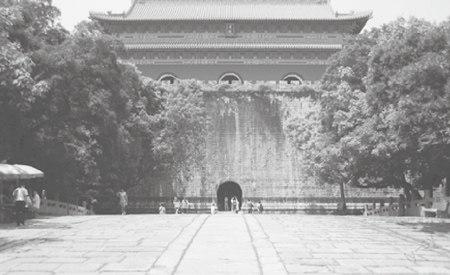
7. Shennongjia Scenic Area
Shennonjia Scenic Area, located in the south part of Shennongjia Forestry District, is famous for its varied plant species as well as solemn mountains. Regarded as the “Lungs of Central China”, the forest coverage exceeds 90 percent of the area. The average latitude in the mountains is 1,700 meters and the Shennong Peak, the highest mountain of the area, features a height of 3,105 meters above sea level. Due to the special climate, it is neither too hot in summer nor too cold in winter. Sometimes clouds stretch around mountains, rewarding tourists will unforgettable views. Besides, the area is home to some rare animals such as golden monkeys, white bears and antelope.
The Shennongjia Forest Zone in eastern Hubei Province shares its border with Chongqing Municipality in the west and Baokang County of Hubei Province in the east. With an area of 3,253 square kilometers (about 803,833 acres), Shennongjia contains four towns, four villages, one national forest park and one national natural reserve area. Because of its marvelous natural scenery, rare foliages, endangered animals and famous legends such as the mysterious “Wild Man” (Chinese Yeti) said to be found in the mountains, the forest zone has attracted many tourists every year, amongst them researchers and scientists.
Shennongjia was named after a very famous Chinese chief in prehistoric time, Shennong, also known as Yandi. He was believed to be one of the two ancestors of Chinese people (the other was Huangdi ). He invented crockery, discovered herbal medicine by personally tasting herbs and taught his people how to cultivate. It is said that while Shennong tasted herbs here, he suffered from poisoning more than seventy times! However in the end, he managed to discover many useful herbal medicines. To commemorate his great work, he became the namesake for the land we speak of today, Shennongjia.
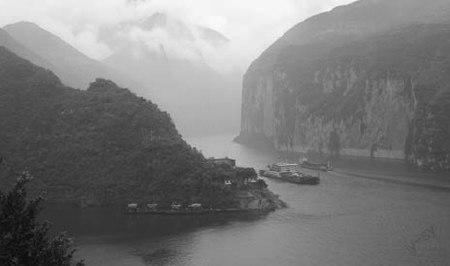
Shennongding Peak, the highest mountain of the scenic area, is 3105.4 meters (about 10,188 feet) high, above sea level. The lowest point, Shizhu River in southeastern Shennongjia Forest Zone, is only 398 meters (about 1,306 feet) high, above sea level. Visitors can enjoy witnessing the different beauties of the four seasons at different altitudes. Flowers blossom out at every corner; firs, spruces, dove trees, and many rare trees can be seen everywhere. Virgin forests, clear streams and grand waterfalls in the thousands of canyons beckon visitors to indulge in the wild nature. Peculiar caves also often amaze visitors. There is the Swallow Cave that inhabited thousands of swallows, the Tide Cave that floods three times a day, the Icy Cave that is always icy in summers, the Fish Cave that inhabited lots of fish at times of thunder and much more. Wild animals, some of which are really rare species, are also frequently seen (i.e. the golden haired monkey, giant salamander, spotted deer and etc.).
8. Three Gorges
The Three Gorges, which are comprised of the Qutang gorge, Wuxia Gorge and Xiling Gorge, stretch from Baidi City in Chongqing to Nanjinguan of Hubei with a total length of 192 kilometers. Taking a boat cruise, visitors can enjoy the river and mountain vistas. As a historically and culturally important location in China, the area has many important historical scenic spots, including Shennv Peak, Gaotang Temple and Baidi City. Besides, it is home to the world famous Three Gorges Dam.
9. Yellow Crane Tower
Located on Snake Hill of Wuchang, Yellow Crane Tower is known as one of the Three Famous Towers South of Yangtze River, together with Yueyang Tower in Hunan and Tengwang Tower in Jiangxi. First built in 223 A.D during the Three Kingdoms period (220-280), it has been destroyed multiple times and the current structure was rebuilt in 1981. Covering a constructing area of 3,219 square meters, it has five-stories, totaling 51.4 meters high. It covered with more than 100,000 yellow glazed tiles, which looks very glorious and magnificent in good weather. It is now regarded as the symbol of Wuhan city.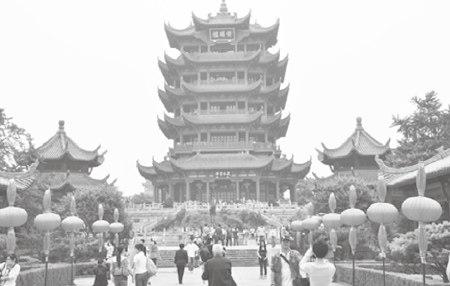
According to legend, the tower was built by the family of an old pothouse owner living in Wuhan City long ago, named Old Xin. One day, a shabbily dressed Taoist priest came to the pothouse and asked for some wine. Old Xin paid no attention to him, but his son was very kind and gave the Taoist some wine without asking for money. The Taoist priest visited the pothouse regularly for half a year when one day the Taoist said to the son that in order to repay his kindness, he would like to draw a crane on the wall of the pothouse, which would dance at his request. When people in the city heard of this, they flocked to the pothouse to see the dancing crane. The Xin family soon became rich and they built the tower as a symbol of gratitude to the Taoist priest.
The tower offers visitors an abundance of things to see. The exhibit on each floor has a theme, for example, the theme of the first floor is about legend. On the wall, there is a ninemeter (about 30 feet) long and six-meter (about 20 feet) wide painted porcelain picture which depicts clouds, rivers and cranes to represent a romantic mood in the heaven. The third floor mainly shows poems written to praise the tower in different dynasties. On top of the tower, visitors are treated to a fabulous panoramic view of the Yangtze River, its bridge and the surrounding buildings in Wuhan City. Outside the tower, there are bronze yellow cranes, memorial gateways and pavilions.
10. Ancient Building Complex in the Wudang Mountains
Located in southwest of Danjiangkou City, Wudang Mountain, also known as Taihe Mountain, is both a famous scenic spot and a holy site of Taoism, Chinas indigenous religion. It has served as the birthplace of Taoism since Tang Dynasty, so it has a large amount of well-preserved Taoist buildings. The temples of the complex feature the architecture characteristics of Yuan, Ming and Qing Dynasties. Besides, as it contains buildings from as early as the 7th century, it represents the highest standards of Chinese art and architecture over a period of nearly 1,000 years. It was listed as a UNESCO World Heritage Site in 1994.

